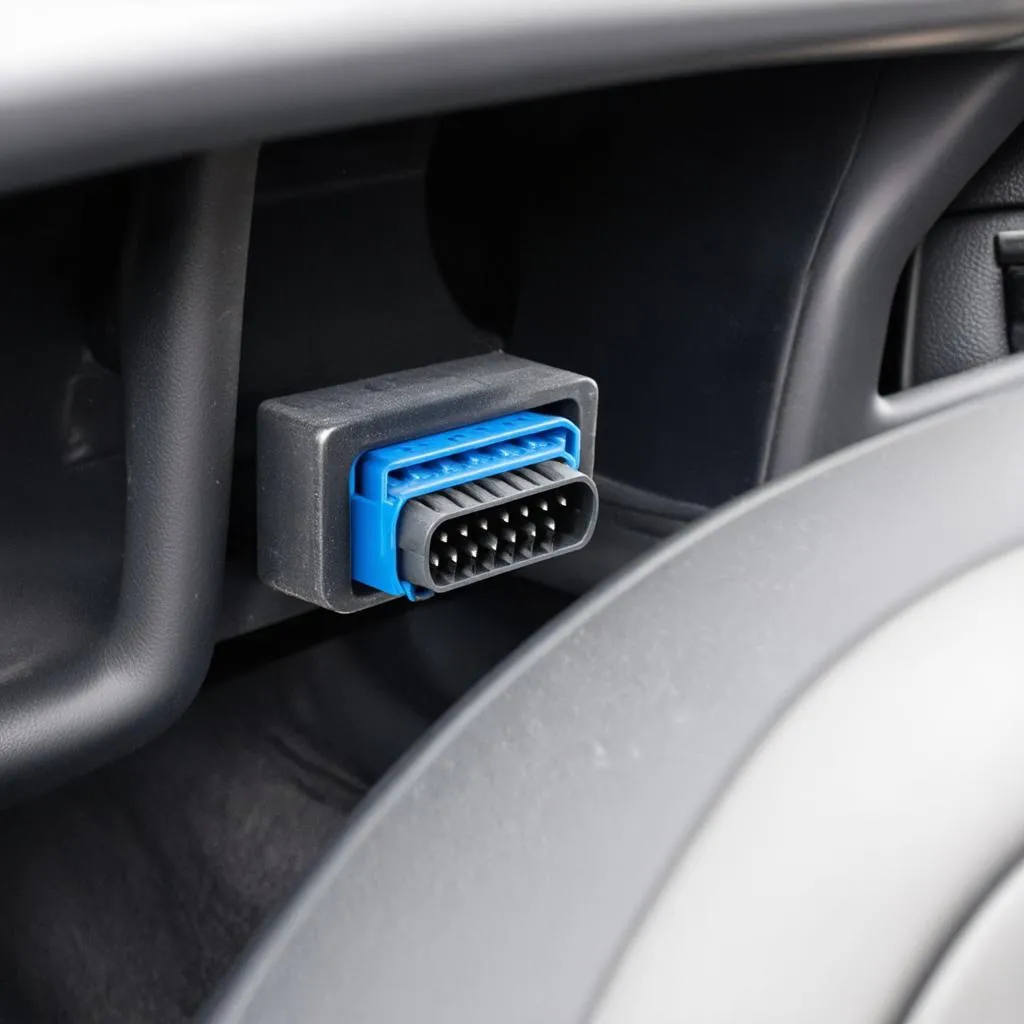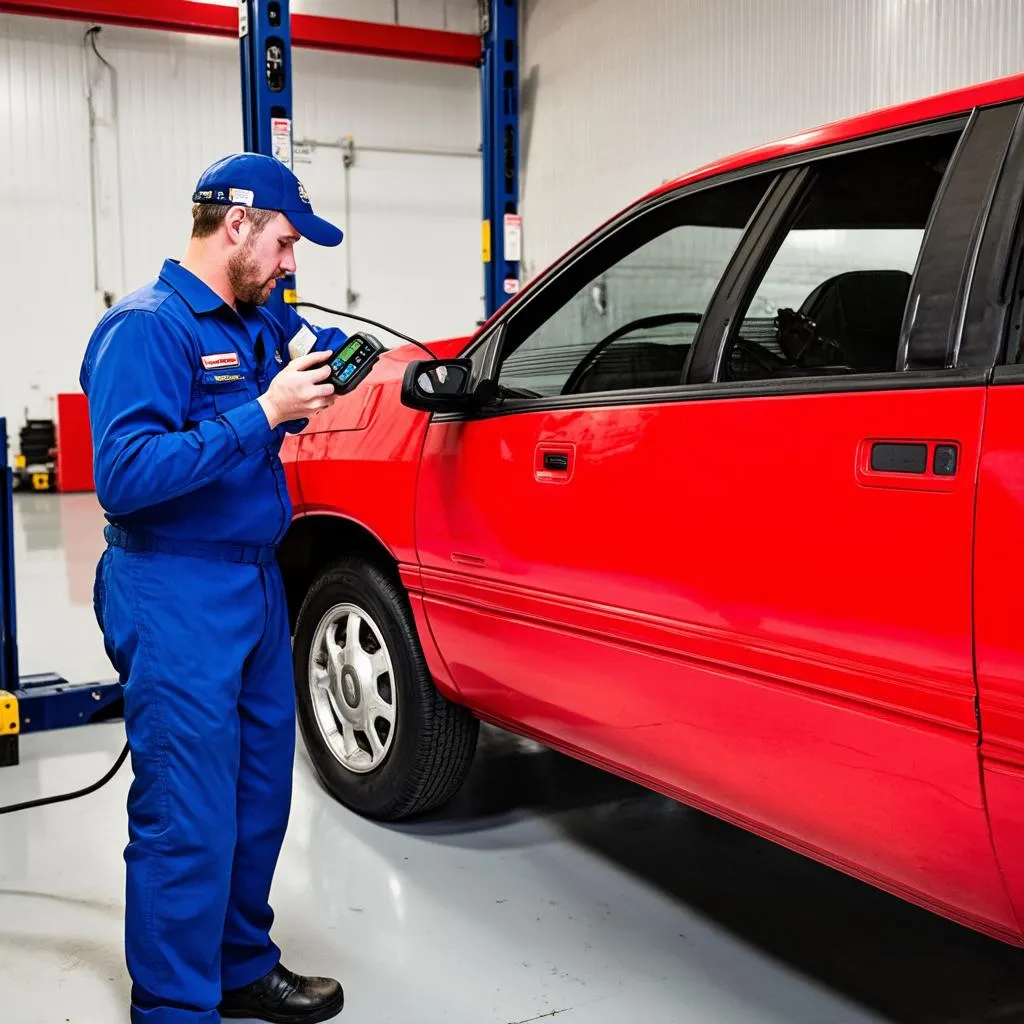Ever popped the hood of your trusty Chevy Cavalier and felt a twinge of confusion when looking for the OBD connection? You’re not alone! Imagine this: You’re driving down a sunny California highway, windows down, music blasting, when suddenly, the dreaded “Check Engine” light pops up. Panic sets in, right? But what if you could understand what your Cavalier is trying to tell you? That’s where the OBD connection comes in.
What Does “Chevy Cavalier Obd Connection” Even Mean?
Before we dive in, let’s break it down. OBD stands for On-Board Diagnostics. Think of it as your car’s very own internal communication system. The “Chevy Cavalier Obd Connection” simply refers to the physical port where you plug in a diagnostic tool to access this system specifically on Chevrolet Cavalier models.
The Importance of Knowing Your OBD
- Empowering Car Owners: Understanding your OBD connection allows you to become more than just a driver; it transforms you into an informed owner. You can use an OBD2 scanner to read and understand those pesky error codes, potentially saving you time and money at the mechanic.
- A Technician’s Best Friend: Mechanics rely heavily on the OBD connection for diagnostics and troubleshooting. It’s like a window into your car’s soul, revealing issues related to the engine, transmission, emissions, and more.
- A Universe of Possibilities: The OBD connection isn’t just about reading error codes. Did you know you can also use it to monitor performance, track fuel economy, and even customize certain vehicle settings?
Locating Your Chevy Cavalier Obd Connection
Finding the OBD port in your Cavalier is usually straightforward. Most models from 1996 onwards have it located under the driver’s side dashboard, often near the steering column or fuse box. If you’re having trouble, consult your owner’s manual or a quick online search for your specific model year.
 Chevy Cavalier OBD Location
Chevy Cavalier OBD Location
Common Chevy Cavalier OBD Issues and Solutions
Like any piece of technology, the OBD system in your Cavalier can encounter issues:
- Loose or Damaged Connection: This can happen over time due to wear and tear or accidental damage. Always check the connection before plugging in any device.
- Blown Fuse: The OBD port might be connected to a fuse that could blow. Check your owner’s manual to identify and replace it if necessary.
- Faulty OBD2 Scanner: Sometimes the issue isn’t with your car, but with the diagnostic tool itself. Make sure you’re using a compatible and reliable scanner.
Pro Tip from Mechanic John Miller: “Always invest in a high-quality OBD2 scanner from a reputable brand. It might seem like an added expense, but it can save you a lot of headaches in the long run.”
Beyond the Basics: Expanding Your OBD Knowledge
Want to delve deeper into the world of OBD? Check out these resources:
- OBD-II Codes & Definitions: Familiarize yourself with common error codes and their meanings.
- OBD Software and Apps: Explore the world of advanced diagnostics and customization with dedicated software and mobile applications.
- Online Forums and Communities: Connect with fellow Chevy Cavalier owners and enthusiasts to share tips, troubleshoot issues, and learn from each other’s experiences.
Still have questions about your Chevy Cavalier’s OBD system?
Don’t hesitate to reach out! Our team of auto experts is available 24/7 via WhatsApp at +84767531508. We can help you with everything from diagnostics to repairs, ensuring your Cavalier is back on the road in top shape.
 Mechanic Connecting OBD Scanner
Mechanic Connecting OBD Scanner
Remember: Knowledge is power. By understanding your Chevy Cavalier’s OBD connection, you’re taking a proactive step towards maintaining your vehicle’s health and ensuring a smooth and enjoyable driving experience.
Looking for more insights into your car’s technology? Check out our articles on Auto Tuner OBD Compatibility and Enhancing Your Chevy Cavalier’s OBD System.
Got a story about your own OBD experiences? Share it in the comments below! We’d love to hear from you.